Snake venom is a complex cocktail of toxins, amino acids and proteins that evolved primarily to immobilize and kill prey, but it also prepares tissues for digestion. In humans, venom causes severe swelling and instability of blood pressure, neuromuscular weakness and paralysis, hemorrhaging, and the death of skeletal muscle, leading to permanent tissue loss and amputations. The World Health Organization estimates that 138,000 people are killed by venomous snakes annually, and most of them die before they can reach emergency medical care. These deaths get little publicity because they occur most often in impoverished, backwater areas of Southeast Asia, Australia, Africa, India, and Central America. The vast majority of victims who are being killed or maimed by snake bites are village farmers and children working out in the fields without shoes where there is no easy way to treat snakebite in the field.
In the United States, typical standard-of-care antivenoms following bites by rattlesnakes, copperheads, water moccasins and coral snakes are extremely expensive, require refrigeration and must be administered intravenously in a hospital setting. They are also species-specific, meaning selecting proper antivenom requires knowing which type of snake bit you. As a result, survivors of rattlesnake bites get a second painful surprise when presented with hospital bills totaling hundreds of thousands of dollars. Dr. Lewin has been working for a decade to develop an easy-to-use solution to potentially deadly snakebite with a drug called Varespladib. What makes Varespladib promising is that it blocks phospholipase-A2, a highly toxic protein that is present in 95% of all snake venoms and plays a direct role in life-threatening tissue destruction, catastrophic bleeding, paralysis and respiratory failure. Proponents say the small synthetic molecule has the potential to stop or reverse neurological damage, as well as restore normal blood-clotting ability when administered immediately after envenoming. Drug trials are being conducted by Ophirex Inc. — a public benefit corporation that Lewin co-founded. The U.S. Food and Drug Administration granted Varespladib a “fast track” designation in 2022 to expedite development and review of its safety and effectiveness, as well as Ophirex’s proposals for manufacturing and distributing the drug. The Department of Defense has also invested about $24 million into the effort, saying the drug could provide an important capability to teams of special forces deployed in austere conditions where snakebites are a significant threat to life and limb. There is also a psychological benefit to having something in your pocket that is life-saving. Getting any new drug from the laboratory to the market is an expensive, intricate process that can sometimes take many years. Ophirex is completing a Phase II clinical trial in the United States and India to determine the tolerability and potential side effects of multi-dose regimens of the drug in about 100 suspected or confirmed snakebite victims. A federal analysis of the results is expected sometime next year and will ultimately determine whether Ophirex has a blockbuster snakebite drug treatment with military and global market opportunities. Some day soon we hope everybody working or recreating in snake country can carry a few new pills in their first aid kits and backpacks. No matter how many signs that are posted: “CAUTION: Entering Rattlesnake Country. Be alert when walking” there is always the accidental potential to step on a rattlesnake, especially for those working in the timber or oil industries. And even if/when the new pill is available, you'll always want to avoid getting bit by any snake in the first place, so continue to wear snake gaiters and be aware of your surroundings. SOURCE: Marin Independent Journal
Everything dealing with the roundup is located inside and around the Nolan County Coliseum located at 220 Coliseum Drive in Sweetwaterwater. Few sounds will make a Texan freeze or take flight faster than a “rattle,” but folks also recognize the important part that snakes play in our ecosystem, including keeping populations of mice and other rodents in check. Most people do not agree with the old adage “the only good rattlesnake is a dead rattlesnake.” Only 15 species of snakes found in Texas are venomous, and some of these are in remote areas where contact with humans is rare. There are four groups of dangerously venomous snakes in North America, and Texas has all four: rattlesnakes, copperheads, cottonmouths, and coral snakes (another good reason to wear snake gaiters when hiking, hunting, and working around brush).
The most famous feature of the rattlesnake is, of course, its rattle. The rattle is found at the tip of the tail and used by the snake to warn potential aggressors to back off. The rattle can also be used to distract the snake’s prey. The rattle sound is created when hollow and bony segments (buttons) bang together. Each time the snake sheds its skin, a new button appears. Until a rattlesnake has two or more buttons, it does not make a sound. That means baby rattlesnakes can be extra dangerous— they have no buttons to warn off a target. Rattlesnake babies are born venomous and often are more aggressive than the adults. As the rattlesnake ages it learns to control the amount of venom it releases, whereas young snakes don’t have that kind of control. Spring is breeding season for rattlers. Adult female rattlesnakes are ovoviviparous, meaning the egg sacs are incubated within the mother so the young emerge fully developed. The longest rattlesnake in Texas so far has been recorded at 81.5 inches long. Whether you are a wildlife biologist, university scientist, herpetologist, snake collector, or just someone interested in seeing and learning more about rattlesnakes, head to Sweetwater, Texas March 8-10, 2024 for the world’s largest Rattlesnake Roundup. Residents say their usual population of 11,000 people soars to approximately 40,000 for the festivities, and all are welcome. Since the first half of the 1900s, rattlesnake roundups have brought a sense of adventure and excitement to rural communities, and this year is no different.
Snakes may burrow underneath a pile of leaf litter or a rotting log or tree, or find a spot in a south-facing rocky crevice. They may also find large cavities in the soil underneath tree stumps. But it's not impossible to see one outside of its den after the first snowfall, or on sunny days in late winter or early spring. Snakes in temperate regions of the country are particularly vulnerable to cold temperatures. This is because the reptiles are cold-blooded, or ectothermic, meaning that the temperature of their blood changes as the temperature of their environment changes. It's why snakes spend enormous amounts of time basking in the sun. Knowing that, it's important to watch your step if you're traversing the foothills or dry brush in the winter months. If you do stumble across a den of rattlers, back up and get the heck out of there! If a rattler is forced out of their hibernation spot because of a disturbance or desperation for food, you can bet they'll be more likely to be aggressive. Some times an adult snake won’t release venom if they know that they won’t be eating the victim, so they dry bite. Young ones unleash all their venom because they don’t know any better yet. And since you’ll never know if a rattler you encounter has just had a snack or not, don’t take a chance — always strap on your snake gaiters when you’re in and around known snake habitats!
Because it's uncommon for snakes to be active once temps dip below 55°F, rattler encounters are rare, but not unheard of, during winters in northern states. As always, wear snake bite protection and give them their space.
Although not yet well known in all states, First Day Hikes originated over 30 years ago at the Blue Hills Reservation in Norfolk County, Massachusetts, outside of Boston. The program was launched to promote both healthy lifestyles and year round recreation at state parks. From coast to coast, park staff and volunteers will lead family-friendly hikes that average one to two miles or longer depending on the state park. Getting everyone outside and unplugged, especially kids, is a fun way to begin 2024. Details about hike locations, difficulty, length, terrain and more are listed on the America’s State Parks website. Whether you’re staying close to home or are on the road this season, the First Day Hikes program is a great opportunity for the whole family to resolve to start a healthier lifestyle. Take in a scenic view from atop a hill, traverse around a lake or pond, breath in fresh air. Surround yourself with the quiet beauty of nature in the winter season, and benefit from the company of a knowledgeable state park guide. Dress warmly in snow gaiters and have a happy, healthy New Year! 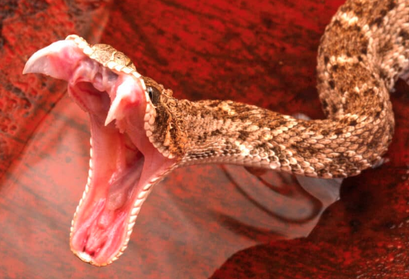 Spring and summer are usually when most people see snakes, therefore, you might think by the time Fall rolls around you won’t need to worry about snake encounters until next year. Not true. Snakes become sluggish anywhere below 60 degrees° F, so as long as warmer temps prevail, as it seems to be this year, depending on where you live, we all still need to be diligent and have a watchful eye when outside raking leaves, gathering firewood or hiking. A steady temperature drop is a signal for the snake to enter brumation (similar to hibernation), but that’s not happening yet— at least not in Arizona, Texas and Florida. There have been several very recent reports of encounters with rattlesnakes: A professional snake wrangler called to remove three rattlesnakes from a home in Mesa, Arizona actually found a nest of 20 vipers lurking behind a water heater in the garage! Their venom contains proteolytic enzymes, which destroy proteins in tissues and muscles, as well as hemotoxins, which destroy blood vessels and blood cells. Bites can cause intense pain, as well as internal bleeding and severe swelling. Luckily the home-owner was not bitten. In Haskell, Texas, a woman found something terrifying when she opened the door of an outside portable toilet— a Western diamond-backed rattlesnake! Even though this viper bites more humans than other rattlesnake, luckily the women saw it first and avoided a bite. Unfortunately, a delivery driver in Palm City, Florida wasn’t so fortunate and now is in “very serious condition” after a rattlesnake bit her during a package delivery. The driver was dropping off a box at a residence when she was attacked by an Eastern diamondback rattlesnake. A local news reporter interviewed the trauma doctor who treated the victim. He gave this explanation as to what happens to a person once bitten by a venomous pit viper: “Pain spreads up the extremity and you get discoloration to the point where within the skin and muscle starts necrosing or dying off. And you’ll see the wound progress rapidly. The worst thing you can do, the doctor warns, is get excited or walk fast or run. Then, the blood circulates faster, and the venom gets distributed to your body faster.” Once at the hospital, a patient will be administered about 10 vials of antivenom. The long recovery process then begins. Each patient is different, but for those that require a skin graft, you could be in the hospital for a month and a half, and then go through extensive physical therapy. The Centers for Disease Control and Prevention (CDC) estimates that 7,000 to 8,000 people get bitten by venomous snakes each year, resulting in 8 to 15 deaths. Diamond-backed rattlesnakes are venomous vipers with a distinctive triangular-shaped head, and are found across the U.S. Southwest and Mexico. The reptiles are named after the characteristic keratin rattles at the end of their tails, which they vibrate to make a hissing noise when threatened. These snakes can grow to between four and six feet long, and live for up to 20 years on a diet of mice, rats, rabbits and ground-dwelling birds. There’s no need to be fearful of snakes and miss out on nice Fall weather, leaf peeping and yard chores — just be prepared by wearing protective snake gaiters or snake boots. Be alert and diligent when outside this time of year, and of course during warmer months, too. If asked, most people would admit they fear snakes. But prehistoric Native Ohioans must have felt differently since they built an effigy mound in the shape of a giant sinuous snake with a curled tail. This internationally known National Historic Landmark is about 1,330 feet in length and ranges from one to three feet in height. It is best viewed from a platform 25 feet off the ground, located at Serpent Mound State Memorial off state Route 73, about 10 miles north of Peebles, Ohio. This mysterious site has been a public park for more than a century and attracts visitors from all over the world. The Ohio History Connection currently manages the Great Serpent Mound, and it is also being considered for inclusion on the UNESCO World Heritage List.
summer solstice sunset and the seven winding coils also may point to the winter solstice sunrise and the equinox sunrise. As such, ancient peoples may have used the structure to mark time or seasons. Serpent Mound may have had a spiritual purpose, given that the many native cultures in North and Central America revered snakes, attributing supernatural powers to the slithering reptiles. Additionally, graves and burial mounds near the site suggest Serpent Mound’s builders may have constructed the structure for some kind of important burial or mortuary function, such as to guide spirits. But the mound itself doesn’t contain any graves or artifacts. A thousand or more years ago, numerous mounds were made by the ancient Native American cultures that flourished along the fertile valleys of the Mississippi, Ohio, Illinois, and Missouri Rivers, though many mounds were destroyed as farms spread across this region. No one knows for sure who built these ancient earthworks or why, but radiocarbon dating has attributed Serpent Mound to one of two Native American cultures: The Early Woodland Adena culture (500 B.C. to 200 A.D.) and Late Prehistoric Fort Ancient culture (1000 to 1650 A.D.). As new data is studied, archeologists tend to lean more toward the idea that Great Serpent Mound was built by the Adena culture. Whether this impressive monument was used as a way to mark time, document a celestial event, act as a compass, serve as a guide to astrological patterns, or provide a place of worship to a supernatural snake god or goddess, we may never know with certainty. But since it is the largest and finest effigy in the United States., it’s worth a visit to see this rare mound in rural southwestern Ohio.
But according to experts, that is not necessarily true. There are about 36 species of rattlesnakes in the USA, and may differ somewhat in their traits and habits. A young rattlesnake may not have rattles on its tail and some will strike without warning if they feel threatened or surprised. So it’s best to always be aware of your surroundings and to not rely on a rattle to warn you of a snake’s presence. Snakes love warmer days. As reptiles, their body temperature mirrors air temperature, so it’s common to begin seeing many more snakes even if the calendar tells us it’s not yet officially spring. In the warm deserts, rattlesnakes are most active from March through October. In the spring, they are active during daylight hours. As days become increasingly hot around early May, rattlesnakes become more active at night and spend the day in a spot of shade or a cool shelter. Regardless of the state in which you live, if you work, hike, fish, hunt, prospect for gold, metal detect, ride ATVs, etc. in rattlesnake country, you’re likely going to encounter some snakes this year. Keep in mind that snakes of many species are through hunkering down now that the weather is warmer, making human encounters more likely with ALL types of snakes. If you’re wondering how to deal with snakes you might find in your own backyard, keep in mind that nonpoisonous snakes are harmless. They eat mice, rats, and other pesky rodents you don’t want around. Having them near the house is a good thing. When disturbed, these harmless snakes usually just slither away. They prefer to avoid contact with humans. But you never know what type of snake you might encounter, so wear thick gloves and snake gaiters around your lower legs when weeding ground cover around the house, clearing brush, or working around timber or log piles. Always watch where you place your hands and feet when hiking, especially through tall weeds or in rocky areas. If you see a snake within five to six feet of you, make slow movements in the opposite direction of the snake. How to identify a rattlesnake:
Did you know that not all snakebites are equal? Some snakes deliver a bite with a small amount of venom and others can deliver a great deal. So-called dry bites contain no venom at all. If you are bitten, even if it doesn’t feel worse than a bee sting at the time, you won’t know how much or how little venom was injected, therefore, it’s imperative you get immediate medical attention.
Some great news coming from the medical community is that in the last couple of years, a new anti-venom called Anavip has become FDA-approved. The biggest difference is how it works in the bloodstream. It lasts longer in the body, so it can bind up the venom for a longer period of time. It essentially prevents patients from getting delayed bleeding abnormalities. That was the problem with the old product. It had a short duration of action, so there was still venom circulation. This new antidote works on some people who have allergies to certain medications. The cost of this newest anti-venom is about half the price of the older one, but at $1,200 a vial, it's still no bargain. Some snake bit victims need to be injected with 30 or more vials!
From your front yard to the hiking trail, it’s important to keep an eye out for snakes to avoid dangerous encounters. Just know that as temperatures rise, so will rattlesnake sightings. No need to avoid enjoying the great outdoors this season, just be more vigilant and prepared by wearing snake gaiters.
Snakes become sluggish anywhere below 60 degrees° Fahrenheit (16° C). A steady temperature drop is a signal for the snake to enter brumation. The snake will become active again once the temperature rises back to about 60 degrees° Fahrenheit (16° C).
Since fall is now upon us, we still need to be diligent and have a watchful eye out for them when outside enjoying the cooler weather, especially when raking leaves, gathering firewood or hiking. Copperhead bites are quite common when raking leaves because they camouflage so well. Their coloration of different shades of brown makes them harder to discern among leaf debris. The Centers for Disease Control and Prevention estimates 7,000 to 8,000 snake bites yearly, mostly from these six species: the Western Diamondback Rattlesnake, Western Pygmy Rattlesnake, Timber Rattlesnake, Cottonmouth, Copperhead, and Coral snake. which has a neurotoxin in its venom. Hemotoxins destroy red blood cells, which also cause mechanical damage at the bite site, swelling, bruising, etc., whereas neurotoxins act on the nervous system, which is more lethal and destructive of nerve tissue. Treatment for snakebites has advanced over the years, as opposed to the old "cut and suck" snakebite kits where the victim would usually make an incision at the bite site and try to suck out any venom. Modern day emergency rooms have CroFab, a pharmaceutical-manufactured anti-venom that neutralizes the venom. They have other treatment options if you're injured by a "dry" bite where no venom was injected into the tissue, but leaves the tell-tale puncture wounds. Luckily the survival rate is extremely high these days thanks to anti-venom. It is extremely important to get to a medical facility as quickly as possible after you have been bitten! What should you do if you encounter a snake while hiking, raking leaves, or gathering firewood? Slowly back away from it. A snake only strikes in self-defense because you prod or step on them or have them cornered where they cannot crawl away and escape. Keep in mind that not all rattlesnakes will rattle a warning. They do have rattles that are audible when they coil up in a defensive posture, however, rattlesnakes don't always have time to get into that defensive posture, because they are stepped on or surprised. Therefore, many will strike without rattling. Snakes are generally farsighted and their inability to see close up is limited, which is why they strike when a threat is very close. There’s no need to be fearful of snakes and miss out on nice Fall weather, leaf peeping and yard chores — just be prepared by wearing protective snake gaiters or snake boots. Be alert and diligent when outside this time of year, and of course during warmer months, too.
The victim said there was no warning rattle. "I saw a snake head come up and strike me in my left calf. My natural reaction was to jump back, and I bent over and pulled up my pant leg to see if he actually penetrated my long pants. I saw two bite marks about two inches apart. As soon as I stood up, I could actually taste the poison in the back of my throat."
Slowly and methodically, Scott started walking up the mountain, which was a pretty steep climb. He had only gone about a quarter of a mile when he lost his balance. He started crawling. And then he was throwing up about every 15 minutes. Then he started to go in and out of consciousness. "My dog stayed with me the whole time. He never left my side. He would paw at me and lick me in the face to keep me awake." About two hours after being bit, he fired a shot from the pistol into the air to get attention. No one was around to hear it. Back at home, his wife had a gnawing feeling something was amiss when Scott didn’t show up as planned. She found her husband’s truck at the trailhead, and about an hour later a rescue attempt was underway. Coincidentally, at the same time, Scott said he had pretty much given in to the notion he wasn't going to make it out alive. So he made a goodbye video to his family with his phone. “I couldn't talk clearly because my throat was so swollen." As it started to get dark, the delirious Scott saw a black blur moving his way and feared it a bear was coming to finish the rattlesnake's job. Luckily, it was the rescue team. A helicopter couldn't be used because of the thick canopy. Scott was too far gone to be slowly carried out. So he was moved by motorcycle, strapped to a driver and held up by paramedics walking on either side. That took three hours. More than 11 hours after he first got bit, he made it to the hospital, but he had already gone into cardiac arrest. Doctors gave him less than a 5% chance to survive. His rescue was one miracle, and his second was the dozen antivenom treatments and other medical interventions that saved his life. He was in a coma for three days but pulled through. "It took me a total of about three months to fully recover enough to where I could actually walk and have the energy to get around,” he says. Scott later learned it was a timber rattlesnake that bit him and that it directly hit a vein, which made the venom spread more rapidly, but also spared him from tissue damage. What to do if a rattlesnake bites you If you are bitten, you need to seek medical attention as quickly as possible say the experts. If you can, call EMS to come get you. You'll know if you have a serious bite in just a couple of minutes; you can start to feel tingling in your face. According to the California Poison Control System, other symptoms could include:
But what if you can't make that SOS call?
What NOT to do if a rattlesnake bites you
How to avoid a snake bite Rattlesnakes are most active in spring and fall, but vigilance is important all year. Snakes really can venture out in winter on a sunny day. Always be careful where you put your hands and your feet, especially when working around woodpiles or clearing brush. Wear thick gloves. If you're reaching under your house, shine a light under there. first to make sure the coast is clear. In addition:
Even if you aren’t volunteering for a work project, you can still find a new place to hike, watch wildlife, take a fun road trip AND get FREE admission in honor of National Public Lands Day. Park properties also include monuments, lakeshores, seashores, and recreation areas. There are about 423 of these units in the National Park Service, so that's a lot of scenic places to enjoy the great outdoors—don't forget your hiking gaiters or snake gaiters! The fee waiver includes entrance fees, but you will still need to pay for reservations, camping, tours, concessions and fees collected by third parties.
National Public Lands Day is organized annually and led by the National Environmental Education Foundation, in partnership with the National Park Service and other federal agencies. If you would like to take part in a volunteer work project, join the hundreds of thousands of volunteers who roll up their sleeves and help restore and preserve public lands by restoring a historic structure, clearing debris from trails, planting trees and more. Certain in-park projects may provide a fee-free day coupon to be used on a future date. If your schedule is full this month, mark your calendar for Veterans Day — November 11, 2022. That’s the next time you can also enjoy FREE admission to all national park properties across the USA. |
RAZER GAITERS
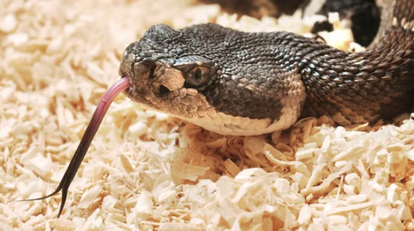
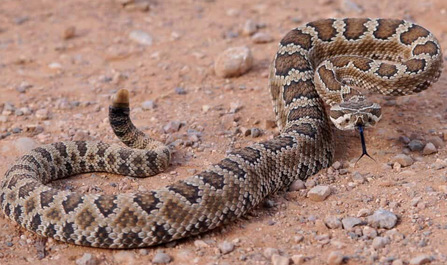
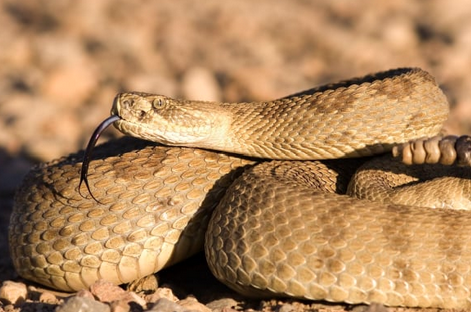

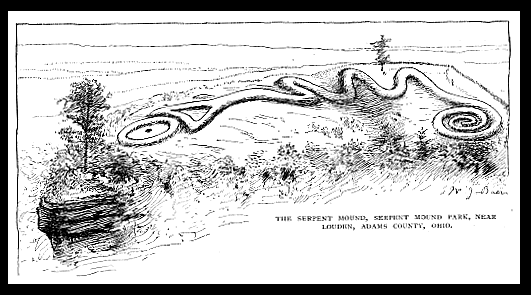
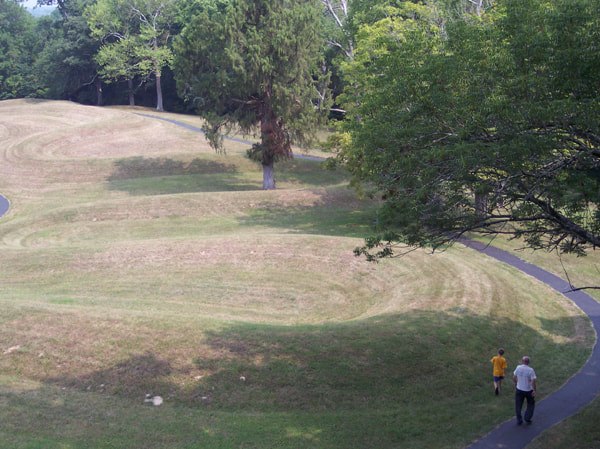
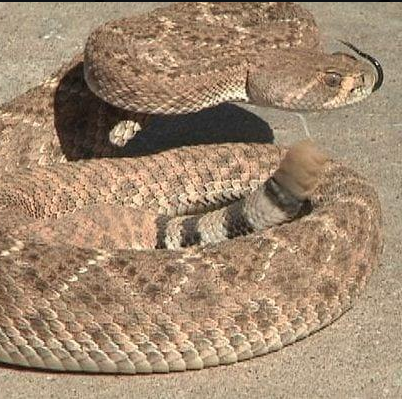
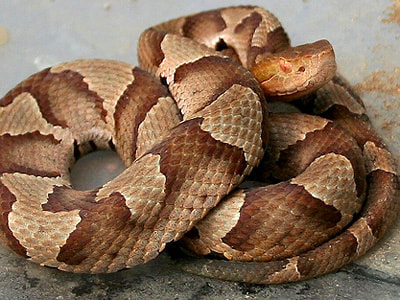


 RSS Feed
RSS Feed
